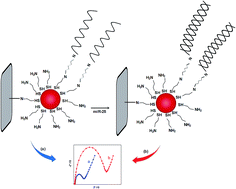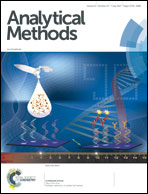Application of cysteamine-capped gold nanoparticles for early detection of lung cancer-specific miRNA (miR-25) in human blood plasma
Abstract
In this study, we designed a nanogenosensor based on cysteamine-capped gold nanoparticles (Cys-AuNPs) that makes it possible to detect the miRNA (miR-25) related to lung cancer. A single stranded probe (ss-probe) was covalently immobilized on the surface of a Cys-AuNPs/glassy carbon electrode (GCE) by glutaraldehyde (GA), and then the ss-probe was hybridized with the lung cancer-specific miRNA. The preparation process of the proposed electrochemical nanogenosensor was characterized by scanning electron microscopy (SEM), cyclic voltammetry (CV), and electrochemical impedance spectroscopy (EIS). Using EIS, the analytical performance of this nanogenosensor in detecting miR-25 was investigated. Under optimal conditions, the proposed nanogenosensor proved to have two miR-25 concentration ranges of 1.0 × 10−12 to 1.0 × 10−10 M and 1.0 × 10−10 to 1.0 × 10−6 M and a limit of detection of 2.5 × 10−13 M. Also, it could significantly make a distinction between a fully matched miRNA strand and a miRNA strand comprising a single-base mutation. Furthermore, this nanogenosensor is capable of detecting miR-25 in human blood plasma without using PCR or any other amplification methods.



 Please wait while we load your content...
Please wait while we load your content...